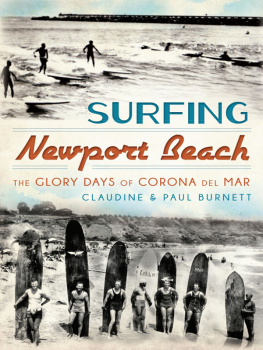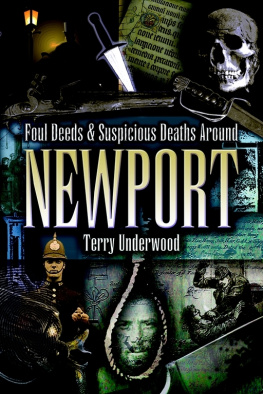
First published in Great Britain in 2015 by
PEN & SWORD MILITARY
an imprint of
Pen and Sword Books Ltd
47 Church Street
Barnsley
South Yorkshire S70 2AS
Copyright Julie Phillips 2015
ISBN: 9781473828179
PDF ISBN: 9781473874602
EPUB ISBN: 9781473874596
PRC ISBN: 9781473874589
The right of Julie Phillips to be identified as the author of this work has been asserted by him in accordance with the Copyright, Designs and Patents Act 1988.
A CIP record for this book is available from the British Library.
All rights reserved. No part of this book may be reproduced or transmitted in any form or by any means, electronic or mechanical including photocopying, recording or by any information storage and retrieval system, without permission from the Publisher in writing.
Printed and bound in England
by CPI Group (UK) Ltd, Croydon, CR0 4YY
Typeset in Times New Roman
Pen & Sword Books Ltd incorporates the imprints of Pen & Sword Archaeology, Atlas, Aviation, Battleground, Discovery, Family History, History, Maritime, Military, Naval, Politics, Railways, Select, Social History, Transport, True Crime, and Claymore Press, Frontline Books, Leo Cooper, Praetorian Press, Remember When, Seaforth Publishing and Wharncliffe.
For a complete list of Pen and Sword titles please contact
Pen and Sword Books Limited
47 Church Street, Barnsley, South Yorkshire, S70 2AS, England
E-mail:
Website: www.pen-and-sword.co.uk
Contents
Dedication
The First World War was an incredibly difficult time, not only for the soldiers who fought in it but for those left behind who fought the war, in their own way, on the home front. This book is dedicated to the fallen of Newport and the surrounding villages and for the gallant effort of their communities in keeping the home fires burning. The world they knew may have changed, but the compassion and support from their local communities and the memorials built to commemorate their fallen friends and comrades ensured that their sacrifices would never be forgotten and that life would carry on.
Due to the vast numbers of servicemen from the Newport area that fought in the Great War and the activities and events that occurred, it has been impossible to include every detail here. Nevertheless, all those who paid the ultimate sacrifice and those who stood strong on the home front are remembered and sincerely thanked.
Acknowledgements
As always, grateful thanks are due to many people involved in the production of this book. I am indebted to the following in particular: David Adams, author, researcher, historian; John Alsop & Stenlake Publishing; Julie Brook (Alumni Archivist, Harper Adams Agricultural University); Chris Deaves, Discover Shropshire Website/Newport History Society SNAP; Linda Fletcher, Archivist, Newport History Society; Allan Frost, author, researcher, local historian; Elizabeth Kosinsky, Librarian & Archivist, Adams Grammar School, Newport; the Newport Advertiser; Newport History Society; Newport Library; Dorothy Nicolle; Christopher Owen; Radio Shropshire, Eric & Claire Show; Clifford Smout; the Shropshire Star; Fred Tipton; Mr Brian Watson Jones; the Wellington Journal and Shrewsbury News; Wellington Library; Malcolm Williams; Stanley Williams.
All images featured in this book are the authors own unless otherwise stated. All reasonable efforts have been made to ascertain the correct copyright-holder of other images used.
Abbreviations used:
AGS: Adams Grammar School
HAAC/HAAU: Harper Adams Agricultural College/University
KSLI: Kings Shropshire Light Infantry
NA: Newport Advertiser
NHS: Newport History Society
VAD: Voluntary Aid Detachment
WJSN: Wellington Journal & Shrewsbury News
Chapter One
A Brief History of Newport
Originally Newport was a small township that bordered the manor of Edgmond, given to the Earl of Shrewsbury by William the Conqueror. It reverted to the Crown in 1102. In the twelfth century Henry I founded a new town adjacent to the old settlement. Here, the long High Street emerged with narrow burgage plots coming at right angles to the main road.
This new town was called Novus Burgus, meaning new self-governing settlement. Although the original charter is missing, it is known that the town was confirmed by Henry II in 1163 at Brewood. The name was changed to Newport circa 1221.

Newport crest. (Author)
The intriguing crest of the town with its distinctive three fish comes from when King Henry II, King Edward II, Queen Elizabeth I and King James I confirmed the charter, enabling its privileges to be expanded. The burgesses kept their privileges by giving a quantity of fish from the vivary to the royal household.

Newport today. (Author)

Newport High Street, 1900s. (Allan Frost)

Newport railway in the 1900s. (John Alsop, Stenlake Publishing)
Geographically, Newport sits on the boundary of Staffordshire in north-east Shropshire, close to the villages of Edgmond, Church Aston, Chetwynd Aston and Lilleshall. The nearest large towns are Telford and Stafford. Newport currently has a population of around 15,000.
The town a natural conduit for trade and travel boasted a railway line that operated between Stafford, Wellington and Shrewsbury. Newport Station, however, was a casualty of Dr Beeching and closed in 1962. The town is also serviced by the A41 which runs north-south between Chester and London.

Newport railway in the 1900s. (NHS)
Newport was not lacking in large, wealthy estates that surrounded the town, offering employment to the local townspeople. The estates would also play key philanthropic roles during the coming war. The lack of imports would lead to food shortages and utilizing some of the estates land as well as peoples back gardens to increase food production would stand them in good stead.
There were five estates bordering the area: Lilleshall, belonging to the Leveson-Gowers, also known as the Dukes of Sutherland; Woodcote of the Cotes family; Longford the estate of the Talbots related to the Earls of Shrewsbury; Chetwynd estate of the Pigotts and later the Burton-Boroughs; and the Aqualate estate of the Bougheys.
The largest of these estates was Lilleshall with over 1,380,000 acres and a rent roll of 141,000 a year. They were also mine owners, forge and furnace operators. Their main operations were with the Lilleshall Company. Also the biggest employers of the local area, the Lilleshall estate employed an estimated 150 people in 1879, including those employed for seasonal work. They also contracted many services from the town of Newport, including plumbing, leather goods, groceries and household furnishings. At the time of the First World War they had almost 4,000 workers on their books.
Next page















